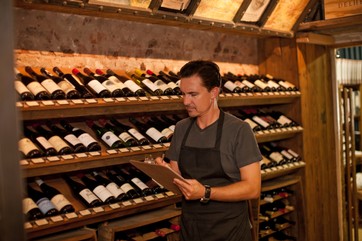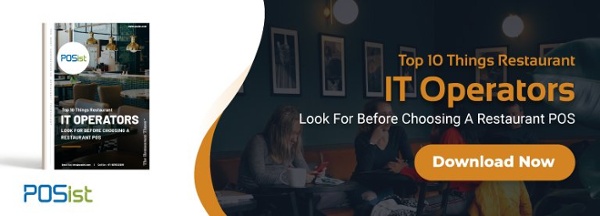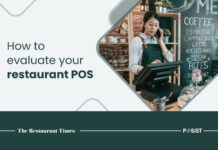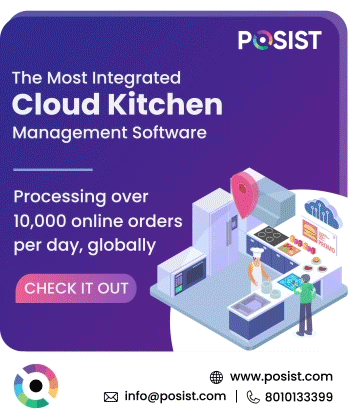A restaurant inventory consists of all the items or raw materials required to prepare dishes, and a restaurant inventory management system helps you track each ingredient used in the recipe. Restaurant inventory management systems integrated with the restaurant POS allow you to control and organize every aspect of the stock, maintains a smooth flow of supply, and also helps you boost your overall profit. As the volume of business grows in a restaurant, inventory management becomes a crucial part of restaurant operations. Read these tips to ensure that you don’t make any Inventory Management Mistakes in your restaurant.
Restaurant Inventory Management Techniques
Follow these seven essential Restaurant Inventory Management tips to control your costs and optimize your restaurant operations.
1. Monitoring the Stock
You must never forget to organize your existing stock before bringing in fresh stock. Posist’s inventory management software gives you the available stock count at the beginning and end of the day. It calculates the balance stock automatically and tallies it with the available physical stock.
The difference between the ideal remaining stock according to the recipe and order placed through the POS and the actual physical stock is called variance. The variance between 2-5% is acceptable as some ingredient is bound to get wasted during preparation. Anything over that is a matter of concern as it points at pilferage and theft. An unfavorable variance implies that fewer products are being used for development, which results in a degradation of quality. Thus, variation is an essential factor in kitchen management.
2. Raw Material Management
Managing the restaurant inventory is necessary to avoid wastage. Restaurant management software becomes essential for the same. Use these points to make sure that your stock is efficiently used.
- Try to adopt a minimal stocking approach for your restaurant inventory, especially in the case of perishables.
- Try to use seasonal products. With intelligent menu engineering, you can use them for a season’s special. This way, you’ll be able to attract customers with something new and avoid wastage of perishables.
- Posist prompts you to reorder when you run out of supplies. You can set a reorder level for each of your items. As soon as the ingredient reaches that level, a reminder email will be sent to you to re-order that ingredient in advance. Real-time alerts are beneficial in favorite items and perishable items that need to be restocked frequently. Such instances prevent the embarrassing situation of running out of supplies during operation hours. Also, ordering when required helps avoid wastage.
- Make sure that items are being used on a First in, First out (FIFO) basis. That is, use the older stock first. Only when the previous stock has been used up, use the newly purchased items to prevent wastage.

3. Recipe Management and Costing
Standardization and Management of Recipe are essential for proper inventory management as it helps in curbing food costs. The quantity of each ingredient to be used is specified; therefore, the inventory management system can quickly judge the number of days the remaining stock will last.
Feed in your recipes in the POS software to assess the usage of raw materials concerning sales. Recipe management leads to lower pilferage in the restaurant. For bigger chains, it helps to guarantee the taste of the dishes as the recipes will be the same across the outlets.
You can also estimate how much preparing a dish would cost you with the help of a recipe costing feature. You have to feed in the recipe and the portion of each ingredient, and the restaurant inventory management software gives you the food cost for that dish. Such detailed information further helps you decide the selling price of that product. Ideally, the food cost should be 30% of the menu price or selling price.
Read pro tips to control restaurant food costs here.
4. Central Kitchen Management
In more prominent establishments such as a long chain and quick service restaurants, you may have a central kitchen where the food is prepared and sent to the other outlets. Posist allows you to manage the overall circulation of the food based on the outlet requirements.
The Multi-Store Management Module helps you manage stock supplies across stores. You can control your franchise outlets by receiving their requirements automatically. When an outlet runs out of a particular item, they can raise indent or purchase orders at their store POS. The request is received at the central kitchen, and the stock can be sent to the desired outlet.
While receiving the stock, it is imperative to check and measure the inventory for any damage or loss. The outlet receiving the stock can generate a GRN (Goods Received Note) that the stock has been received. In the case of loss or damaged stock, the same can be mentioned in the GRN.
5. Shelf Life Management
Shelf-life management is an integral part of inventory management for restaurants. Each item in the inventory has a specified shelf life. Some items like rice can last for years, while some, like vegetables, have an experience before they spoil. Therefore, managing the shelf life of perishables is essential.
For each of the items in the inventory, you can specify for how long they can be preserved and subsequently used before getting spoiled. If the items were not used during that period due to slow sales or some other reason, you would be notified, along with the reason for the incident.
6. Roles and Permissions
Thefts in the restaurant are a vice that cannot seem to be controlled despite all preventive measures. The variance feature mentioned earlier helps you detect a discrepancy in the stock to prevent your staff from pocketing the raw materials. However, you can altogether avoid this menace with the help of Posist’s roles and permissions feature. With this, you can create specific roles for each task and appoint people who would be held responsible for that task. All activities are logged, and different users can be assigned other modules to check the inventory.
7. Reporting and Analytics
Reporting and analytics are critical features of restaurant inventory management that help in restaurant operations. The sales reports and raw material usage helps forecast and create plans. Profit and loss reports are generated depending on the stock sale and consumption. This feature further enables you to to-
- Analyze inventory trends- You can analyze the inventory trends to make informed decisions, such as deciding the menu. Detailed reports based on the consumption of each stock give insights on which ingredient is the most popular and needs to be utilized more in the recipes.
- Keep track of stock and maintain accuracy- An accurate list of the available supplies helps you keep track of the daily and weekly usage.
Your restaurant POS should ideally be equipped with these stock and inventory management features. Here is a quick checklist that will help you choose the right POS for your restaurant business.



















Lots of great pointers here. I can't imagine what it was like running a restaurant before POS and inventory management systems existed. Thanks for sharing!
Dear John,
POS has certainly altered the entire restaurant operations and management, making it much smoother and efficient.
Thanks for reading the article, we're glad you liked it 🙂
Do check out our other articles for more tips.
Thanks!
Really incisive article on F&B inventory management. Since your software already supports tracking the inventory consumption based on orders, I am wondering if there is a way to actually track the raw material using some technology to get a real picture of inventory utilization. Does that make sense for a restaurant owner ?
Restaurant inventory management is a task that many takes years to master. Using technology to streamline the entire inventory operation is the best thing as per my experience. It will ensure that you keep internal theft and pilferage at the bay, and run your restaurant business seamlessly.
Taking inventory may be one of your least favorite tasks, but it’s crucial to controlling your restaurant’s food costs and reducing waste. The article is very well explained as it comprises of all the details especially the content under Central Kitchen Management, is very well written and important. Good Read. Thankyou.
This is a well-compiled list of restaurant inventory best practices. very useful for inventory management. thanks for sharing.
Managing the restaurant’s inventory is one of the most tedious tasks. If you are not paying attention to it you will definitely face losses.
I like how this article talks about useful techniques one can use to manage the inventory.
Great articles on your website. I am looking to open a restaurant and am in the process of writing the detailed business plan. All of your articles are of great help and are contributing a lot. I am looking forward to understand all your systems & softwares and plan to use them. I would like to learn more about how I can automate maximum management processes in the Kitchen of my restaurant.